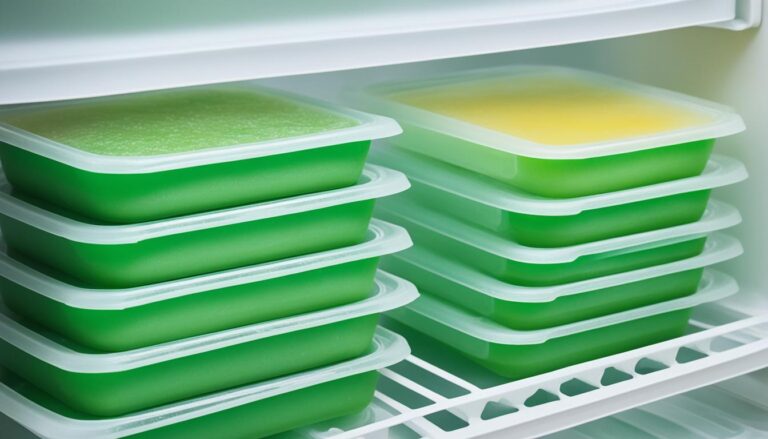How Long Does Baby Belly Button Take To Heal Inside
The healing time for a baby’s belly button or umbilical cord stump can vary, but on average, it takes about one to three weeks for the inside of a baby’s belly button to heal. During this time, the umbilical cord stump will dry up, change color, and eventually fall off, leaving behind the healed belly button. It’s important to properly care for the umbilical cord stump to prevent infection and promote healing.
Key Takeaways:
- The healing time for a baby’s belly button or umbilical cord stump is typically one to three weeks.
- During the healing process, the umbilical cord stump will dry up, change color, and eventually fall off.
- Proper care for the umbilical cord stump is essential to prevent infection and promote healing.
Caring for the Umbilical Cord Stump
Proper care for the umbilical cord stump is crucial for the healing process and to prevent infection. By following these do’s and don’ts and implementing these tips, you can ensure the best care for your baby’s umbilical cord:
- Do keep the stump clean and dry: Gently clean the area around the stump with warm water and mild soap, then pat it dry with a clean cloth or towel. Avoid using rubbing alcohol or other disinfectants, as they can delay the healing process.
- Do fold down the front of the diaper: Keeping the front of the baby’s diaper folded down can allow air to circulate around the stump, helping it to dry out.
| Do | Don’t |
|---|---|
|
|
In addition to these do’s and don’ts, here are some more useful tips for umbilical cord care:
- Avoid submerging the stump in water: While it’s important to keep the stump clean, avoid submerging it in water, such as in a tub or swimming pool, until it has completely healed.
- Stick to sponge baths: Instead of giving your baby a full bath, opt for sponge baths until the umbilical cord stump falls off.
- Don’t pull off the stump prematurely: It may be tempting to remove the stump yourself, but it’s important to let it fall off naturally. Pulling it off prematurely can lead to bleeding and increase the risk of infection.
Remember, if there are any signs of infection such as redness, swelling, discharge, or a foul smell, or if the stump hasn’t fallen off after three weeks, it’s important to seek medical attention. Your healthcare provider will be able to assess the situation and provide appropriate care.
Proper care for the umbilical cord stump is essential for ensuring its healing and preventing infection. Follow these tips and guidelines to ensure a smooth healing process and keep your baby healthy and happy.
Normal Healing Process of the Umbilical Cord Stump
The healing process of the umbilical cord stump is a natural and gradual process that occurs in newborns. Understanding the normal changes that happen during the healing process can help parents monitor their baby’s healing progress and identify any potential issues.
Initially, the umbilical cord stump appears as a moist and yellowish stump attached to the baby’s belly button. Over time, it begins to dry up as the body’s natural healing mechanisms kick in. As the stump dries, it may change color, turning darker or even black.
It’s important to note that during the healing process, it is normal to observe a small amount of blood or oozing when the umbilical cord stump falls off. This is similar to a scab forming and indicates that the healing is progressing. The timing of the stump falling off can vary, but it typically occurs within one to three weeks after birth.
Throughout the healing process, parents should monitor the umbilical cord stump for signs of infection, such as redness, swelling, or a foul smell. These may indicate that the healing process has been compromised, and medical attention should be sought. It’s important to remember that each baby’s healing process may be slightly different, but as long as the healing is progressing and there are no signs of infection, there is typically no cause for concern.
Signs of Healing Umbilical Cord Stump:
- Gradual drying and shrinking of the stump
- Color changing from yellowish to darker or black
- Presence of a small amount of blood or oozing when the stump falls off
Signs of Infection to Monitor:
- Redness and swelling around the umbilical cord stump
- Foul smell or discharge
By understanding the normal healing process and being vigilant for signs of infection, parents can ensure proper care for their baby’s umbilical cord stump and promote a smooth healing journey.
Signs of Infection in the Umbilical Cord Stump
It’s crucial to watch out for signs of infection in the umbilical cord stump. Recognizing these signs early on can help prevent complications and ensure prompt medical attention. Here are some common symptoms of an infected umbilical cord stump:
- Redness and swelling: The skin around the stump may become increasingly red and swollen, indicating an inflammatory response.
- Stickiness: If you notice a sticky or gooey discharge around the stump, it could be a sign of infection.
- Bad smell: A foul odor emanating from the stump area may indicate the presence of bacteria.
- Non-clear or blood-tinged discharge: Normal discharge from the umbilical cord stump is usually clear. If you observe discharge that is yellow, green, or blood-tinged, it could be a sign of infection.
- Red or swollen surrounding skin: In infected cases, the skin surrounding the stump may appear red, swollen, or tender.
- Pink, moist bump: In some instances, a pink, moist mass may develop on the stump, which could be a sign of infection.
If you notice any of these signs in your baby’s umbilical cord stump, it’s important to seek medical attention promptly. Early intervention can prevent the infection from spreading and ensure proper treatment. Your healthcare provider will evaluate the stump and recommend appropriate steps to manage the infection and promote healing.
Expert Insight
“Monitor your baby’s umbilical cord stump closely for any signs of infection, such as redness, swelling, or a foul smell. It’s always better to err on the side of caution and consult your healthcare provider for any concerns. Prompt attention to an infected stump can prevent further complications and contribute to a smooth healing process.”
– Dr. Emily Thompson, Pediatrician
Umbilical Granuloma: Minor Complication
In some cases, after the umbilical cord falls off, a minor complication called umbilical granuloma can develop. This occurs when a small, round growth forms in the center of the navel. The granuloma is characterized by its red color and is typically covered with clear mucus, distinguishing it from the surrounding dry skin. Although umbilical granulomas are generally harmless, if left untreated, they can become an entry point for umbilical infections.
If your baby has an umbilical granuloma, it is important to seek medical attention for proper treatment. A doctor can easily treat the granuloma in their office by applying a chemical called silver nitrate. This chemical helps to destroy the excess tissue and encourages healing. The procedure is generally quick and straightforward, with minimal discomfort for your baby.
By addressing umbilical granulomas promptly, you can ensure that your baby’s navel heals properly and minimize the risk of complications. Remember to consult with a healthcare professional for accurate diagnosis and guidance in managing umbilical granulomas.
| Treatment for Umbilical Granuloma | Causes of Umbilical Granuloma |
|---|---|
| Application of silver nitrate | Excess tissue growth after umbilical cord falls off |
When to Seek Medical Attention for Umbilical Cord Symptoms
Knowing when to seek medical attention for umbilical cord symptoms is crucial for your baby’s well-being. While most umbilical cord healing is a natural process, there are situations where medical intervention is necessary to ensure proper care and prevention of complications.
Symptoms that require immediate medical attention include:
- Abnormal appearance or behavior in a baby less than 1 month old
- Bleeding that won’t stop even with direct pressure
- A red streak running from the navel
These urgent symptoms warrant prompt medical evaluation and treatment to address any potential complications.
There are also symptoms that should be addressed within 24 hours by contacting your healthcare provider. These include:
- Small bleeding that lasts more than 3 days
- Pimples or sores near the navel
- Any other concerns or questions you may have
It’s important to remember that every baby is unique, and while some variations in umbilical cord healing may be normal, it’s always better to err on the side of caution and seek medical advice when in doubt. Your healthcare provider will be able to assess your baby’s symptoms and provide appropriate guidance.
Remember, your baby’s health is invaluable, and it’s always better to be proactive and seek medical attention if you have concerns or questions about the healing process of your baby’s umbilical cord stump.
Prevention and Tips for Umbilical Cord Care
To ensure the proper healing of your baby’s umbilical cord stump and prevent complications, it’s essential to follow the right umbilical cord care guidelines.
First and foremost, keep the umbilical cord stump clean and dry. Gently clean the area with warm water and a mild soap, and then pat it dry with a clean, soft towel. Avoid using alcohol, hydrogen peroxide, or any other disinfectants, as they can delay the healing process.
Good hand hygiene is crucial when handling the umbilical cord stump. Wash your hands thoroughly with soap and water before and after caring for the stump to prevent the transfer of bacteria. Additionally, never cover the stump with a diaper or tight clothing, as this can trap moisture and increase the risk of infection.
It’s important to regularly monitor the stump for any signs of infection or abnormal healing. Look out for redness, swelling, foul odor, or discharge that is not clear or blood-tinged. If you notice any of these symptoms, contact your pediatrician immediately.
By following these prevention and care tips, you can promote the healing of your baby’s umbilical cord stump and minimize the risk of complications. Remember, proper care is essential for your baby’s well-being.
FAQ
How long does it take for a baby’s belly button to heal inside?
On average, it takes about one to three weeks for the inside of a baby’s belly button to heal. During this time, the umbilical cord stump will dry up, change color, and eventually fall off, leaving behind the healed belly button.
How should I care for the umbilical cord stump?
It is recommended to keep the stump dry and clean, avoiding the use of rubbing alcohol or other disinfectants. Keeping the front of the baby’s diaper folded down can allow for air exposure and help the stump dry out. Sponge baths are usually recommended until the stump falls off. It’s important not to pull off the stump prematurely and to seek medical attention if there are signs of infection or if the stump hasn’t fallen off after three weeks.
What is the normal healing process of the umbilical cord stump?
The healing process involves the gradual drying, shrinking, and changing of color. It starts as a moist, yellowish stump and eventually dries up and turns black. The stump usually falls off within one to three weeks after birth. During this time, it’s important to monitor the stump for any signs of infection, such as redness, swelling, or a foul smell.
What are the signs of infection in the umbilical cord stump?
Signs of infection may include redness, swelling, stickiness, a bad smell, and discharge that is not clear or blood-tinged. The surrounding skin may also become red and swollen. If any of these signs are observed, it’s important to seek medical attention promptly to prevent the infection from spreading.
What is umbilical granuloma and how is it treated?
Umbilical granuloma is a minor complication that can occur after the umbilical cord falls off. It is characterized by the presence of a small, round growth in the center of the navel. The granuloma is typically red and covered with clear mucus. It can be easily treated in a doctor’s office by applying a chemical called silver nitrate.
When should I seek medical attention for umbilical cord symptoms?
Some symptoms may require immediate medical attention, such as if the baby is less than 1 month old and looks or acts abnormal, bleeding won’t stop after applying direct pressure, or there is a red streak running from the navel. Less urgent symptoms that should be addressed within 24 hours include small bleeding that lasts more than 3 days, pimples or sores near the navel, and other concerns. It’s important to contact a doctor if there are any concerns or questions regarding the umbilical cord healing process.
How can I prevent umbilical cord complications and promote healing?
To prevent complications and promote healing, it’s important to keep the stump dry and clean, avoid covering it with the diaper, practice good hand hygiene, and monitor for any signs of infection or abnormal healing. Following these guidelines can help ensure a smooth healing process for the baby’s umbilical cord stump.







